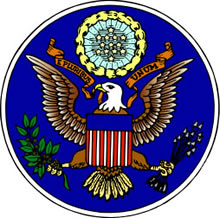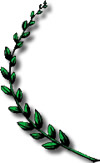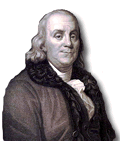If At First You Don't Succeed  The Founding Fathers took six years to pick a Great Seal for the United States. They wanted a symbol that was unique to America and that represented the new nation. In 1776, the Continental Congress appointed a committee made up of John Adams, Thomas Jefferson, and Benjamin Franklin to design a seal for the new nation. The committee's final design was was very complicated and Congress rejected all of it, except for the motto "E Pluribus Unum", which is Latin for "Out of Many, One." The Founding Fathers took six years to pick a Great Seal for the United States. They wanted a symbol that was unique to America and that represented the new nation. In 1776, the Continental Congress appointed a committee made up of John Adams, Thomas Jefferson, and Benjamin Franklin to design a seal for the new nation. The committee's final design was was very complicated and Congress rejected all of it, except for the motto "E Pluribus Unum", which is Latin for "Out of Many, One."
 The Continental Congress appointed another committee made up of
James Lovell of Massachusetts and John Morin Scott and William Churchill Houston of Virginia
in 1780. Their design was also rejected by Congress, although some parts of it - the olive branch, the shield, and the 13 stars - were used in the final design. A third committee was appointed in 1782. This committee added the bald eagle. With a little polishing, the final design was submitted to the Second Continental Congress and it was approved on June 20, 1782. The Continental Congress appointed another committee made up of
James Lovell of Massachusetts and John Morin Scott and William Churchill Houston of Virginia
in 1780. Their design was also rejected by Congress, although some parts of it - the olive branch, the shield, and the 13 stars - were used in the final design. A third committee was appointed in 1782. This committee added the bald eagle. With a little polishing, the final design was submitted to the Second Continental Congress and it was approved on June 20, 1782.
|
|
Franklin Cries Fowl Two years after the final design was approved by the Continental Congress, Benjamin Franklin wrote to his daughter Sarah about the choice of the bald eagle on the Great Seal.
 For my own part, I wish the bald eagle had not been chosen as the representative of our country; he is a bird of bad moral character; he does not get his living honestly; you may have seen him perched on some dead tree, where, too lazy to fish for himself, he watches the labor of the fishing-hawk; and, when that diligent bird has at length taken a fish, and is bearing it to his nest for the support of his mate and young ones, the bald eagle pursues him, and takes it from him. With all this injustice he is never in good case; but, like those among men who live by sharping and robbing, he is generally poor, and often very lousy. Besides, he is a rank coward; the little kingbird, not bigger than a sparrow, attacks him boldly and drives him out of the district. He is therefore by no means a proper emblem for the brave and honest Cincinnati of America, who have driven all the kingbirds from our country; though exactly fit for that order of knights, which the French call Chevaliers d'Industrie. For my own part, I wish the bald eagle had not been chosen as the representative of our country; he is a bird of bad moral character; he does not get his living honestly; you may have seen him perched on some dead tree, where, too lazy to fish for himself, he watches the labor of the fishing-hawk; and, when that diligent bird has at length taken a fish, and is bearing it to his nest for the support of his mate and young ones, the bald eagle pursues him, and takes it from him. With all this injustice he is never in good case; but, like those among men who live by sharping and robbing, he is generally poor, and often very lousy. Besides, he is a rank coward; the little kingbird, not bigger than a sparrow, attacks him boldly and drives him out of the district. He is therefore by no means a proper emblem for the brave and honest Cincinnati of America, who have driven all the kingbirds from our country; though exactly fit for that order of knights, which the French call Chevaliers d'Industrie.
--Benjamin Franklin, in a letter in 1784 to his daughter Sarah |
|

 The Founding Fathers took six years to pick a Great Seal for the United States. They wanted a symbol that was unique to America and that represented the new nation. In 1776, the Continental Congress appointed a committee made up of John Adams, Thomas Jefferson, and Benjamin Franklin to design a seal for the new nation. The committee's final design was was very complicated and Congress rejected all of it, except for the motto "E Pluribus Unum", which is Latin for "Out of Many, One."
The Founding Fathers took six years to pick a Great Seal for the United States. They wanted a symbol that was unique to America and that represented the new nation. In 1776, the Continental Congress appointed a committee made up of John Adams, Thomas Jefferson, and Benjamin Franklin to design a seal for the new nation. The committee's final design was was very complicated and Congress rejected all of it, except for the motto "E Pluribus Unum", which is Latin for "Out of Many, One."  The Continental Congress appointed another committee made up of
James Lovell of Massachusetts and John Morin Scott and William Churchill Houston of Virginia
in 1780. Their design was also rejected by Congress, although some parts of it - the olive branch, the shield, and the 13 stars - were used in the final design. A third committee was appointed in 1782. This committee added the bald eagle. With a little polishing, the final design was submitted to the Second Continental Congress and it was approved on June 20, 1782.
The Continental Congress appointed another committee made up of
James Lovell of Massachusetts and John Morin Scott and William Churchill Houston of Virginia
in 1780. Their design was also rejected by Congress, although some parts of it - the olive branch, the shield, and the 13 stars - were used in the final design. A third committee was appointed in 1782. This committee added the bald eagle. With a little polishing, the final design was submitted to the Second Continental Congress and it was approved on June 20, 1782. For my own part, I wish the bald eagle had not been chosen as the representative of our country; he is a bird of bad moral character; he does not get his living honestly; you may have seen him perched on some dead tree, where, too lazy to fish for himself, he watches the labor of the fishing-hawk; and, when that diligent bird has at length taken a fish, and is bearing it to his nest for the support of his mate and young ones, the bald eagle pursues him, and takes it from him. With all this injustice he is never in good case; but, like those among men who live by sharping and robbing, he is generally poor, and often very lousy. Besides, he is a rank coward; the little kingbird, not bigger than a sparrow, attacks him boldly and drives him out of the district. He is therefore by no means a proper emblem for the brave and honest Cincinnati of America, who have driven all the kingbirds from our country; though exactly fit for that order of knights, which the French call Chevaliers d'Industrie.
For my own part, I wish the bald eagle had not been chosen as the representative of our country; he is a bird of bad moral character; he does not get his living honestly; you may have seen him perched on some dead tree, where, too lazy to fish for himself, he watches the labor of the fishing-hawk; and, when that diligent bird has at length taken a fish, and is bearing it to his nest for the support of his mate and young ones, the bald eagle pursues him, and takes it from him. With all this injustice he is never in good case; but, like those among men who live by sharping and robbing, he is generally poor, and often very lousy. Besides, he is a rank coward; the little kingbird, not bigger than a sparrow, attacks him boldly and drives him out of the district. He is therefore by no means a proper emblem for the brave and honest Cincinnati of America, who have driven all the kingbirds from our country; though exactly fit for that order of knights, which the French call Chevaliers d'Industrie.